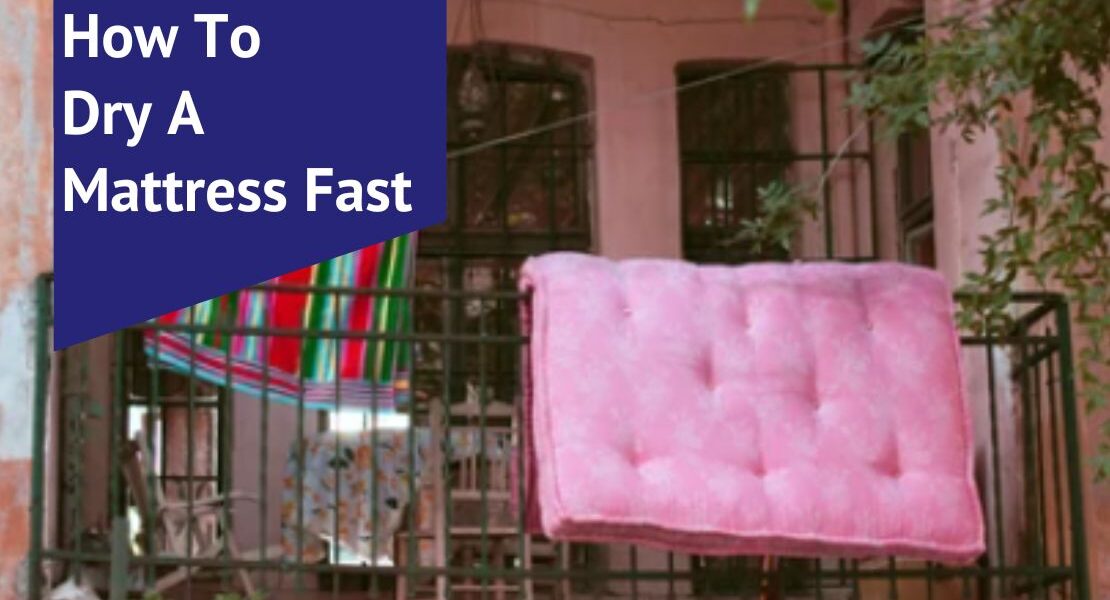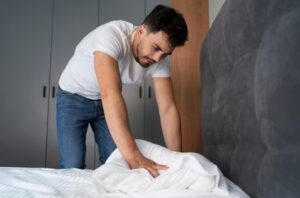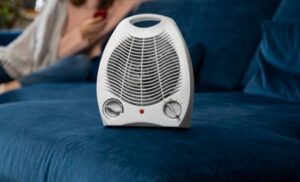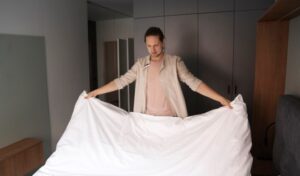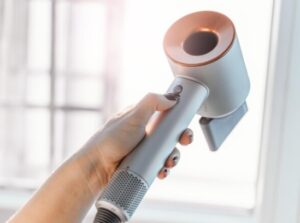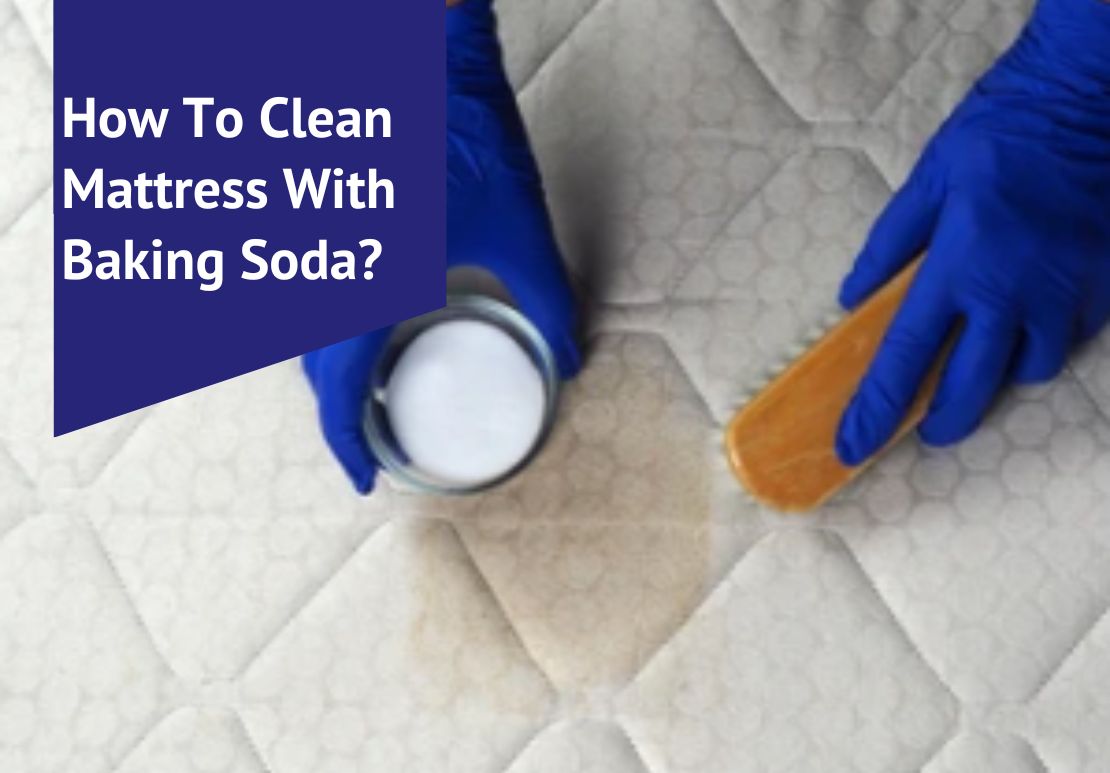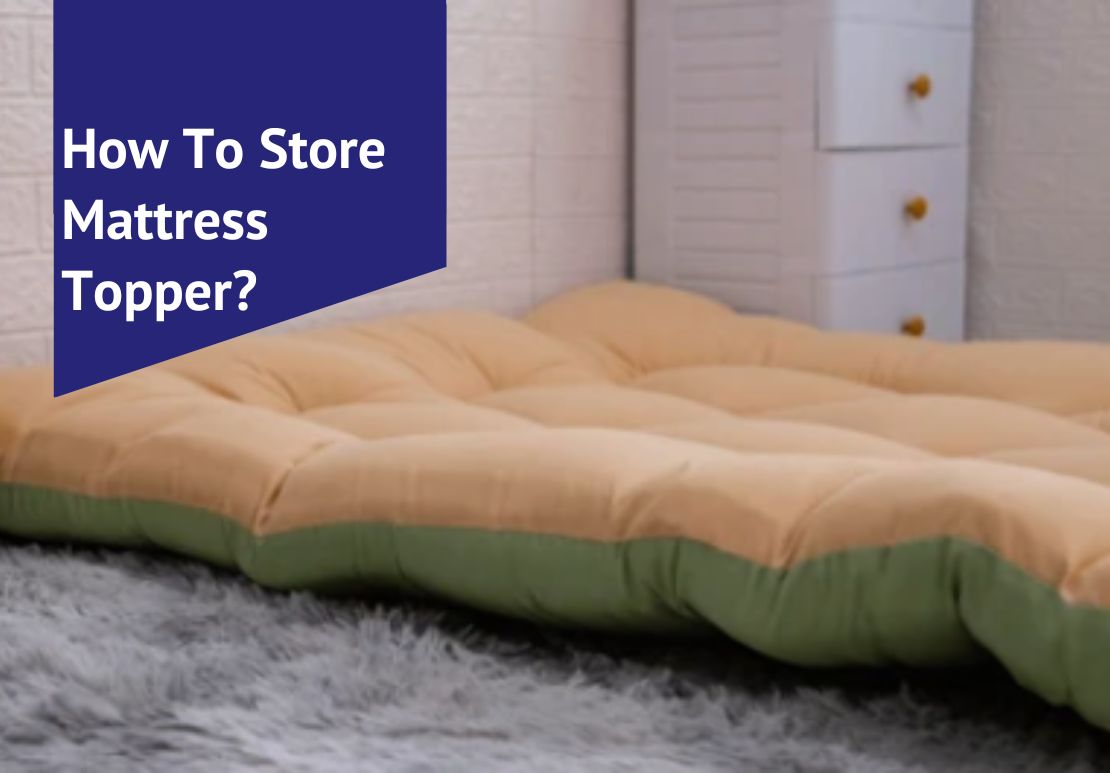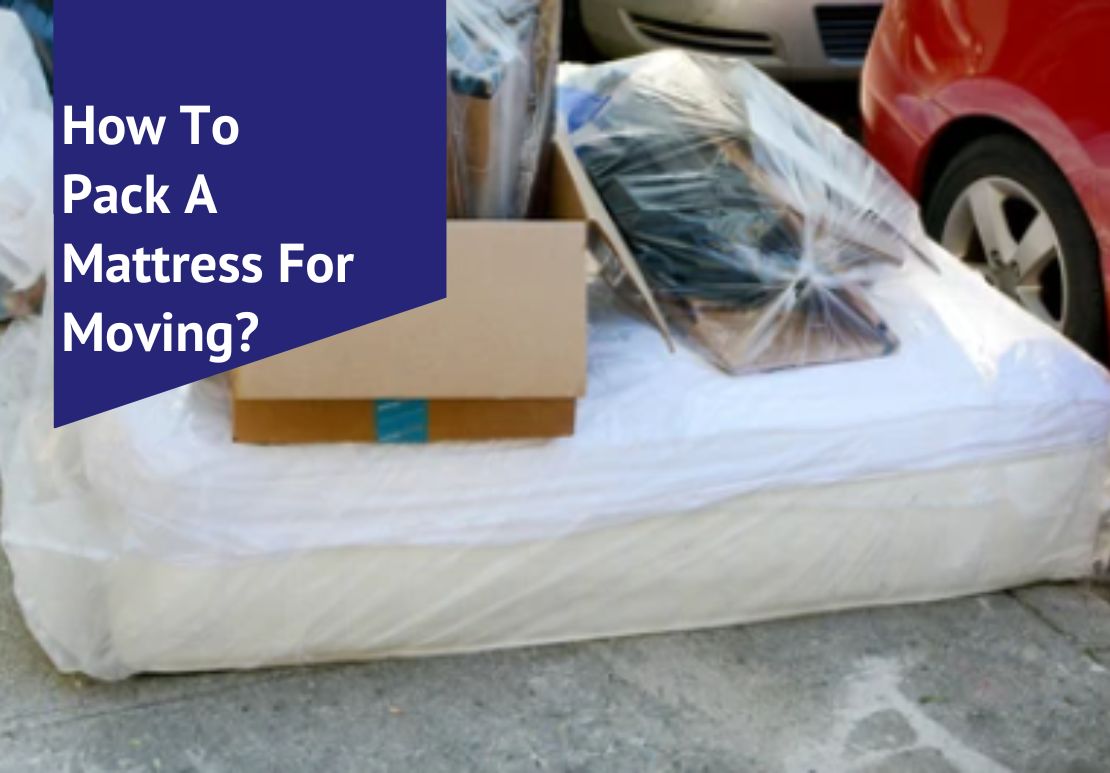Dealing with a wet mattress can be a hassle, especially when time is of the essence. Whether from spills, bedwetting, or an unfortunate leak, moisture in mattresses poses serious problems.
This article outlines fast and efficient methods to dry your mattress effectively, minimizing damage and preventing mold growth. Continue reading for expert tips that promise speed and effectiveness in tackling this soggy predicament.
Table of Contents
Key Takeaways
- Act quickly to blot out as much water as possible using towels, and then press down with your body weight for maximum moisture absorption.
- Apply baking soda generously over the wet area, letting it sit overnight to absorb moisture and neutralize odors before vacuuming.
- Enhance air circulation by opening windows or using fans/dehumidifiers, and elevate the mattress off the ground to facilitate faster drying.
- Avoid direct heat sources like blow dryers or heaters that could damage the mattress material during the drying process.
- Consider professional cleaning services to ensure thorough drying and prevent mold or mildew growth if faced with significant water exposure.
How long does it take for a mattress to dry
The time it takes for a mattress to dry can vary based on several factors, including the extent of wetness and the drying methods employed. Typically, if you use towels to draw out excess moisture and then apply pressure by standing on them, the surface may feel dry to the touch within a few hours.
However, for the mattress to be thoroughly dry — especially in cases of significant water exposure — it might take anywhere from 24 to 48 hours. Adequate air circulation is critical during this period; employing fans or a dehumidifier can expedite the drying process.
Employing baking soda as an absorbent is another swift technique that assists in removing moisture from your mattress. Sprinkle it generously over the damp area and rub it in with a sponge; this not only soaks up wetness but also helps eliminate odors.
Leave it overnight for optimum absorption before vacuuming it up using an upholstery attachment. This method effectively reduces overall drying time while simultaneously refreshing your bedding.
How to quickly dry a mattress?
Quickly drying a mattress requires assessing the damage, getting water out of the mattress, removing excess moisture, and preventing mold growth. It’s essential to act fast and follow these steps to ensure adequate drying and prevent further damage.
Assessing the damage
Begin by checking the extent of the water damage on your mattress. If it’s a small spill, you’ll have an easier time drying out the wet area than if an entire side is soaked through.
Look for signs that moisture has penetrated deep inside — this will determine how much effort and which techniques you should use to ensure thorough drying.
Next, remove any bedding and inspect both sides of the mattress for dampness. Consider whether water affects only the surface or if it’s absorbed into deeper layers. Determining how deeply the water has seeped in is crucial for selecting the proper method to effectively dry your mattress without risking mold or mildew growth later on.
Use touch and sight to gauge saturation levels; areas that feel notably cooler or display darkened colors might indicate more significant moisture retention, requiring extra attention during drying.
How to get water out of the mattress
Once the extent of water damage to the mattress is determined, the next crucial step involves removing the water effectively. This process is vital to restore the comfort and hygiene of your mattress. However, it is important to note the type of mattress you are dealing with. For example, a memory foam mattress can have different methods to clean and dry. Thus, following the manufacturer’s guidelines is highly recommended.
- Start by stripping the bed of all bedding, including sheets, mattress covers, and protectors. Ensure everything is removed to expose the wet areas completely.
- Grab clean towels and press them into the mattress to absorb as much moisture as possible. Place your weight on the towels for more efficient absorption.
- Replace soaked towels with dry ones and repeat this step until no more moisture wicks away onto the towels.
- Sprinkle a generous amount of baking soda over the damp area. Baking soda helps in absorbing residual moisture and neutralizes any odors.
- Leave baking soda on for several hours—or even better, overnight—to give it ample time to work its magic. Ensure that the mattress is clean and dry before using the mattress again.
- Use a dry sponge to rub baking soda gently; this helps it penetrate deeper into the mattress fibers for better absorption.
- Attach an upholstery nozzle to your vacuum cleaner.
- Carefully vacuum the baking soda or cat litter from the mattress surface, which will also help pull out lingering dampness from within.
- If a hair dryer is available, set it on a cool setting and direct airflow over wet spots to further aid in drying without causing heat damage.
- Keep electric heaters or blow dryers at a safe distance if you choose to use them; direct heat could damage the material of your mattress if not carefully monitored.
- For large-scale water exposure or if these methods are insufficient, consider enlisting professional cleaning services experienced in handling water-damaged mattresses.
Removing excess moisture
To remove excess moisture from a wet mattress, follow these steps:
- Use towels to blot and absorb as much water as possible from the mattress.
- Stand on the towels to press them into the mattress, soaking the moisture.
Ensure that you use a waterproof mattress protector to keep your mattress and the area around the mattress free of any problematic elements.
Preventing mold growth on your new mattress
Preventing mold growth is crucial after a mattress has been exposed to moisture. Once excess water has been removed, it’s essential to ensure that you dry the mattress entirely and promptly to thwart mold and mildew formation.
Proper ventilation and air circulation in the room where the mattress is drying can aid in expediting the process. Moreover, cleaning the wet mattress using appropriate methods, such as using towels, fans, or dehumidifiers, can help prevent mold and mildew growth altogether.
Monitoring signs of musty odors or discoloration upon drying is also essential. If these are noticed after the drying steps, additional measures may be necessary to eliminate any lingering moisture that could lead to mold formation.
Tips for Quick Drying
To speed up the drying process, homeowners can use various techniques such as blotting with towels, such as a dry towel, or using fans or a dehumidifier, elevating the mattress to improve air circulation, and avoiding heat sources. Another way is to let the mattress to air dry to fasten the process.
These tips will help remove excess moisture from the mattress efficiently.
Blotting with towels
Blotting with towels is a practical first step in quickly drying a wet mattress. Placing clean, absorbent towels over the wet area and pressing down firmly can help soak excess moisture efficiently.
The homeowner can then stand on the towels to further press them into the mattress, aiding in absorption. This method helps to remove as much water as possible before proceeding with other drying techniques, preventing mold growth and reducing overall drying time.
Placing particular focus on areas of concentrated moisture, such as spills or bedwetting accidents, homeowners should actively blot with fresh towels until minimal dampness remains.
Using fans or a dehumidifier
To expedite drying, utilize fans or a dehumidifier in the room to increase air circulation and remove excess moisture from the wet mattress. Placing a fan near the damp area allows quicker water evaporation, reducing the overall drying time.
Additionally, using a dehumidifier effectively extracts moisture from the air in the room, speeding up the mattress’s drying process.
Proper ventilation is crucial during this phase – opening windows and doors can help accelerate drying by facilitating airflow and preventing stagnant humidity around the affected mattress.
Elevating the mattress
Elevating the mattress is an effective technique to expedite the drying process. Homeowners can promote quicker moisture evaporation by propping up the mattress and allowing air to flow underneath.
This can be done using sturdy objects like books, boxes, or wooden blocks placed strategically under the corners and mid-section of the mattress. Elevating the mattress also aids in preventing mold growth by facilitating better airflow throughout the entire surface area.
Additionally, raising the mattress allows fans or dehumidifiers to circulate air more efficiently around and beneath it. The combined effect of elevated positioning and increased air circulation accelerates the evaporation of moisture trapped within a wet mattress while minimizing potential damage from prolonged exposure to dampness.
Avoiding heat sources to prevent damage to your mattress.
To prevent potential damage to the mattress and ensure safe and effective drying, homeowners should avoid using heat sources directly on the wet spot. Utilizing electric heaters or blow dryers can lead to further moisture retention within the mattress instead of expediting the drying process.
Additionally, exposure to direct sunlight or placing the mattress near a heat source like a radiator should be avoided as it may exacerbate moisture accumulation and increase the risk of mold growth.
By avoiding these heat sources, homeowners can safeguard their mattresses from additional damage and aid in a more successful drying process.
How to dry a wet mattress from rain?
If your mattress gets wet from rain and is completely soaked in rain water, follow these steps to help dry it quickly and effectively:
- Remove the wet bedding and any other items from the mattress for the soaked mattress to dry quickly.
- Use towels to absorb as much moisture as possible by pressing down firmly on the wet areas.
- Sprinkle baking soda or cat litter over the damp spots to absorb remaining moisture and leave it on for several hours, preferably overnight.
- Vacuum up the baking soda or cat litter using a vacuum with an upholstery attachment to remove any remaining moisture.
- Once most moisture has been absorbed, elevate the mattress and use fans or a dehumidifier to speed up drying. Also, allow the mattress to dry completely before using it again.
Conclusion
To dry a mattress fast, acting quickly and efficiently when faced with water damage is essential. Remove excess moisture using towels or a vacuum, then sprinkle baking soda on the affected area to help absorb the remaining dampness.
Elevate the mattress and use fans or a dehumidifier to promote quicker drying. Remember that proper ventilation is crucial in preventing mold growth. Acting promptly and employing these techniques will ensure your mattress is dried effectively and efficiently. All these tips and tricks will help you to understand how to get water out of mattress effectively.
FAQs – Frequently Asked Questions
How can I quickly dry a wet mattress?
To quickly dry a wet mattress, use towels to absorb excess moisture, then place the mattress in a well-ventilated area with fans or dehumidifiers.
Can I use a hairdryer to dry a wet mattress?
Yes, you can use a hairdryer on its lowest setting and keep it moving to avoid concentrating heat in one spot.
Is it possible to dry a mattress outside under the sun?
Yes, drying a mattress outside under direct sunlight is an effective way to remove moisture and odors.
How long does it take for a mattress to dry completely after getting wet?
The time required for complete drying depends on factors such as the amount of moisture and the ventilation in the drying area.
Can I still use my mattress if it gets wet?
It is not recommended to continue using the mattress until it has been completely dried and there are no signs of dampness or odor.

